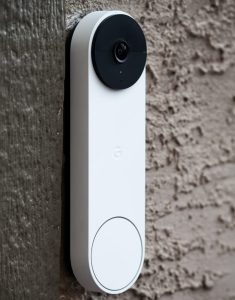This article is not intended to be a guide to buying cell phones, with specific specifications and models, but a practical look at the future of the sector to know how a phone should be to accompany us as long as possible, delaying the inevitable obsolescence as much as possible.
What does a future-proof phone look like?
This article is structured in important sections that a phone must have to withstand the passage of time (2 to 3 years), paying attention to what the market currently offers us and where it is heading.
1. With OLED screen and QHD resolution
Today, the trend towards larger and larger screens is clear. However, as a tool for calling, the phone has been gaining ground in other tasks. First, in messaging and social networking applications, and now as a multimedia gadget for consuming audiovisual content and video games.
Ratios close to 2:1, reduction of frames to the minimum expression and design elements such as notches, holes and other “inventions” )) and have even made it possible to take advantage of the dimensions of the terminal without sacrificing manageability…
2. Cameras: quantity and quality
Unless you are indifferent to photography, in which case you will find entry and mid-range phones with acceptable results for your expectations, photography is one of the differential areas between the different ranges of cell phones.
Cell phone photography is closely linked to software and in this regard, the best-positioned brands are Google, Huawei, or Apple, judging by their results in recent years with their flagships.
3. More RAM, please
Although we can not quantify its effect clearly, the amount of RAM on a device is key to multitasking and to better withstand the passage of time, when applications get bigger. And with the way Android works and is updated, RAM is a hardware element that will always come in handy.
In case the interface used by the phone has no restriction on the number of open applications, more RAM allows us to run more apps at the same time and the jump from one program to another can occur more quickly.
The management of available resources in iOS is different, resulting in a more efficient operating system, so RAM requirements are lower.
Returning to Android, the interface of the different manufacturers determines RAM consumption, so the simpler and more similar to Google’s original system, the better.
If we go to the entry ranges, the starting point is 3 GB, but if we are looking for an Android terminal that will last for years, 6 GB of RAM is a good starting point. And if the price jump is not considerable, in the simpler versions of the high-end we can opt for 8GB models, as is the case of the OnePlus 9, or directly make the leap to 12GB.
4. Compact, edgeless and with robust materials.
Although aesthetics is a subjective concept subject to taste, it is undeniable that every season we find parallels in terms of integration of trend-setting design elements: infinity screens, multiple rear cameras, the notch last year, notch and holes.
Although over the last two years we have seen original proposals with protrusions or flaps, everything points to all-screen models with selfie sensors integrated into the panel itself.
What seems clear is that many of these design elements seek to continue offering more features within the same space, or in other words, compactness is the end result of the design. That the smartphone remains comfortable in the hand.
Assessing its beauty is something we leave to the user’s taste – although I particularly miss the symmetry of other eras -, what we can evaluate is the quality of its construction and materials. While in the high end it is common to find the elegance of metal and glass, the latter as attractive as fragile, lowering the pretensions usually translates into changing the material for plastic, a very interesting substitution for the combination of performance and price offered by this petroleum derivative.
None of them is indestructible, but the general feeling is that the materials are becoming more and more modern and sophisticated, with additional additions that theoretically extend their durability, such as Gorilla Glass on the panel or water resistance.
At this point in the movie, all high-end phones have IP68 certification, i.e., they are water and dust-resistant. In this sense, opting for a phone with this degree of resistance can save us a lot of trouble.
5. More than 4,000 mAh battery on Android and fast charging
Regardless of the range of the phone, it is recommended that the battery is at least 4,000 mAh, a fairly common starting point that can allow us to endure the day with moderate use without problems. If you are a demanding user in terms of games, calls, series, and social networks, autonomy is a key section to take into account, but more than in terms of milliampere-hours in cold, paying attention to the actual duration through experiences of use.
No revolution is expected in the medium term in this section, although OLED screens, more efficient components and more refined operating systems result in better use of the terminal’s available capacity.


